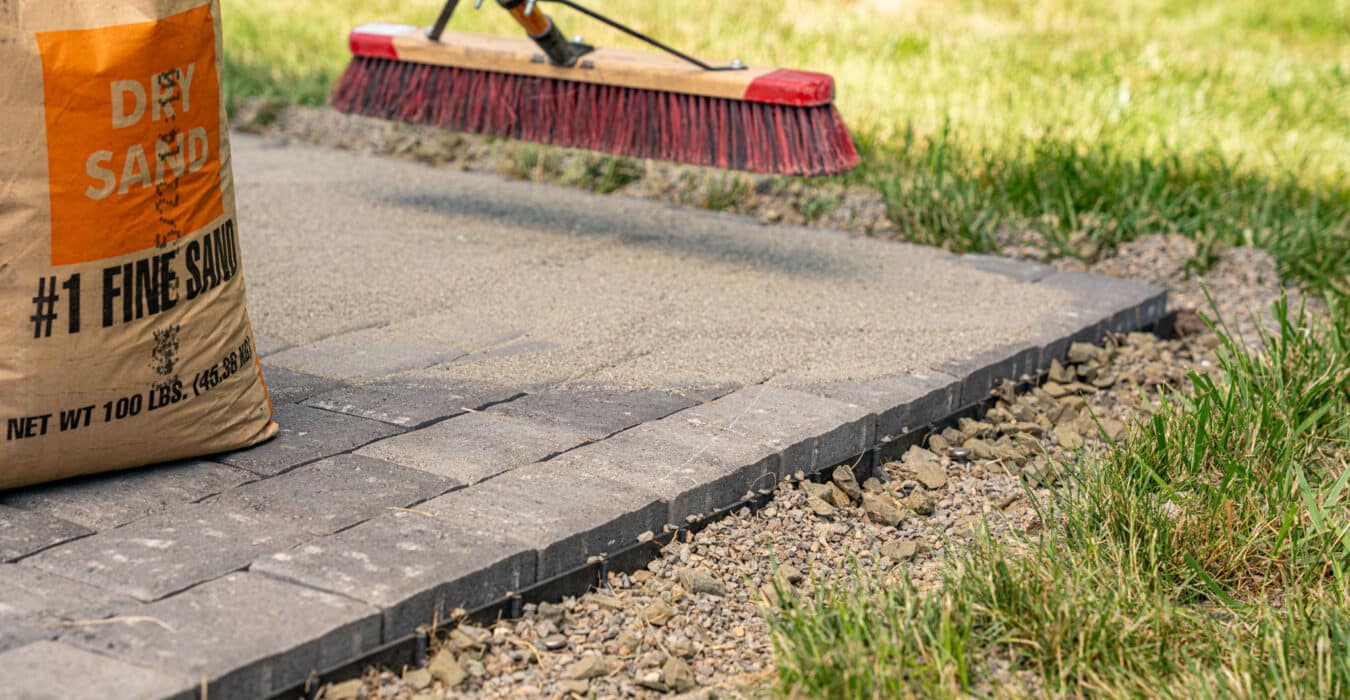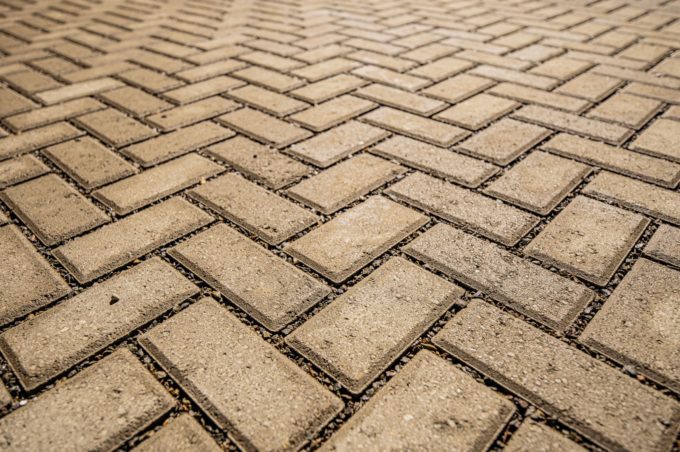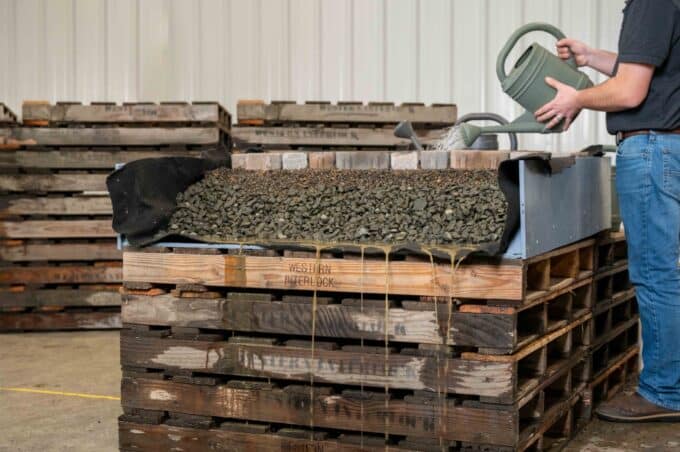Get our FREE Project Planning Guide
"*" indicates required fields
Does it matter which type of joint sand material you use?
If you are in the middle of a paver installation project, you might wonder what type of sand to use for the joints between your pavers. This blog post examines the differences between regular dry sand and polymeric jointing sand and how you can know which is better.
What is regular dry sand?
Regular dry joint sand is a natural product known as “all-purpose sand” or “leveling sand.” It is not the same as play sand, beach sand, or masonry sand—those types are not strong enough. Regular dry sand is fine-graded sand with some slightly larger granules in it. It is loose, flexible, and does not include bonding agents in the sand.
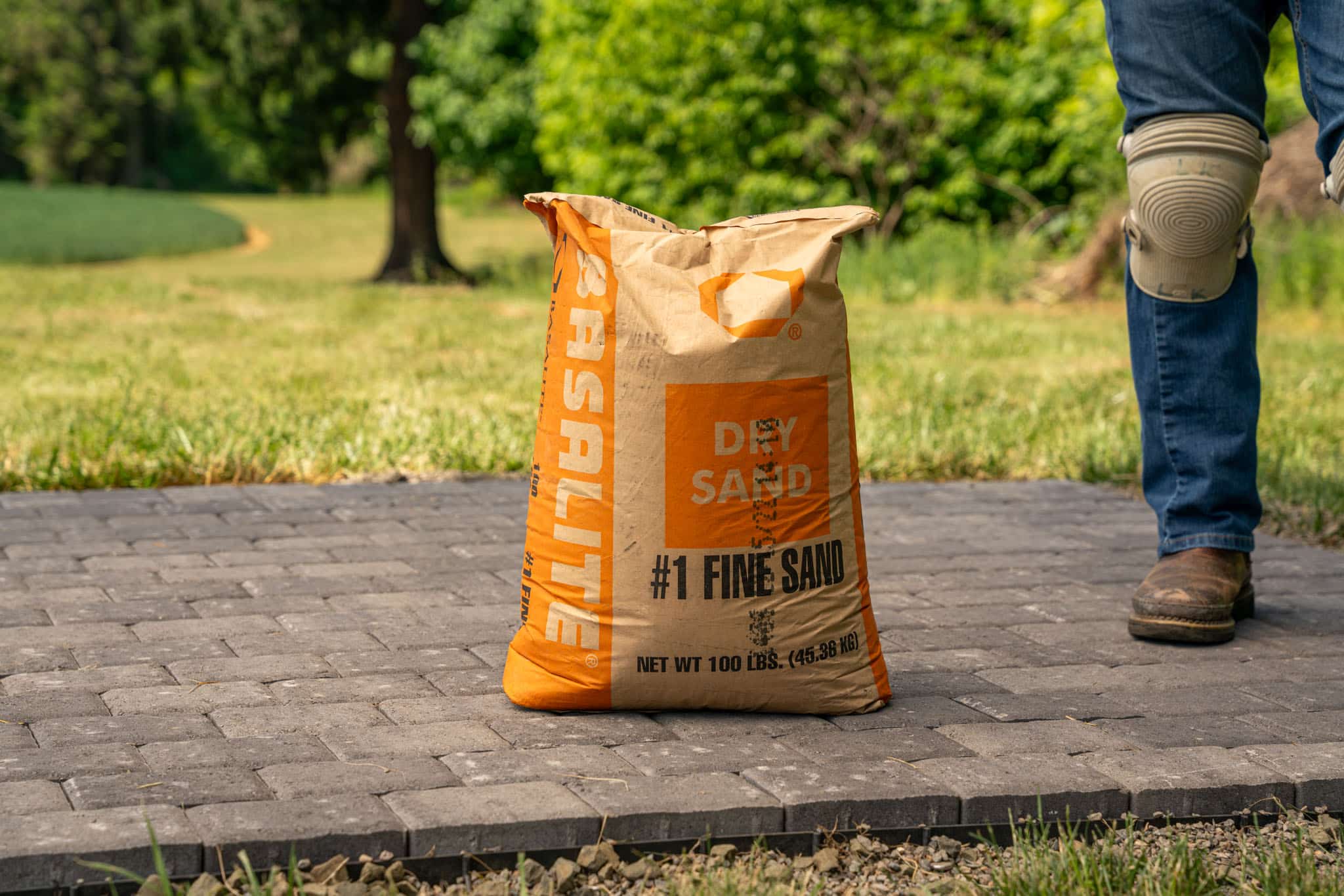
What is polymeric jointing sand?
Polymeric jointing sand is not a natural product but a mixture of man-made and natural components. The fine particles of sand in joint sand have bonding agents such as silica. It seems similar to regular dry sand when it is dry, but when it is wet, the bonding agents activate and form a hard compound.
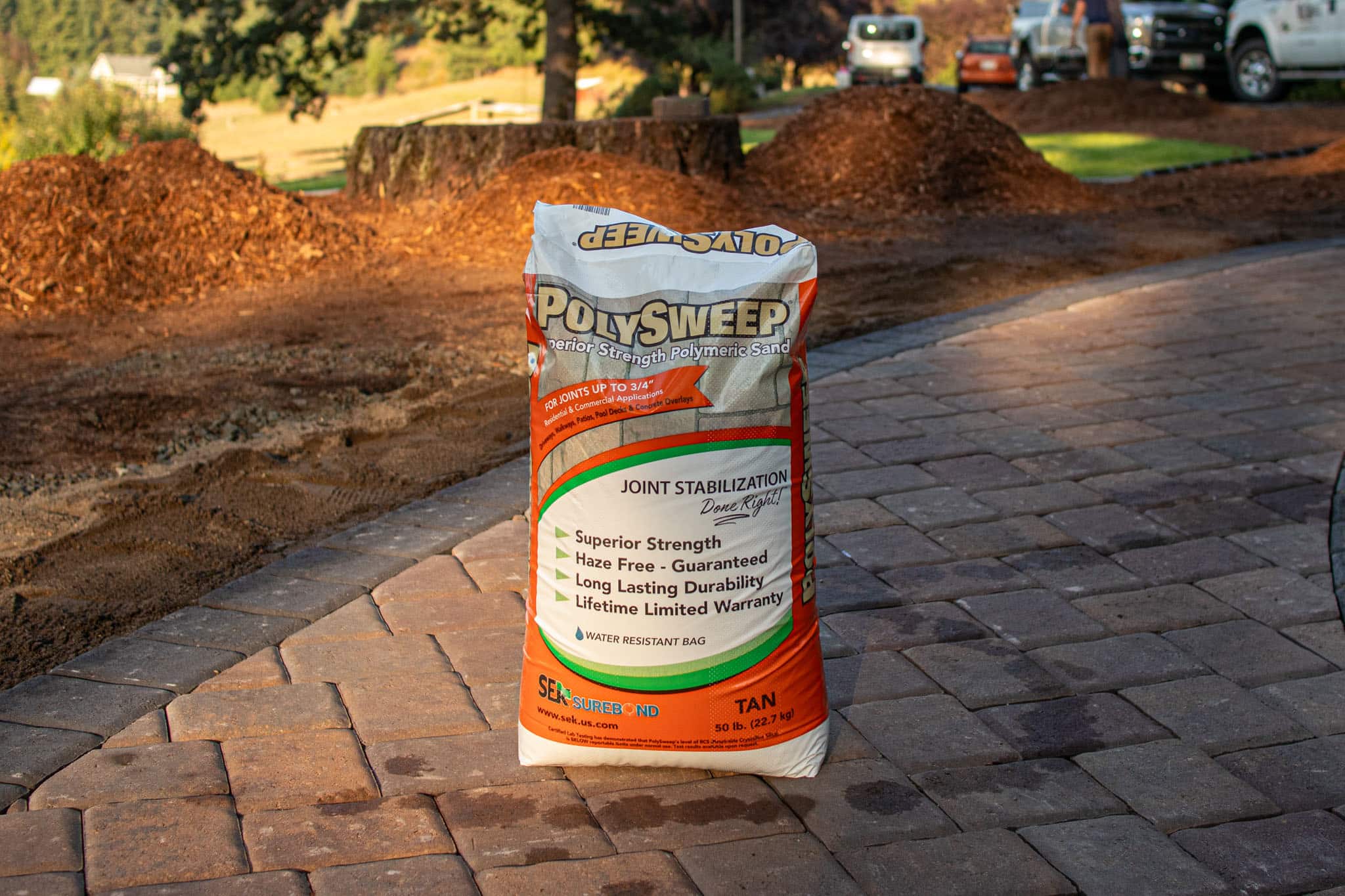
How do they look?
Both polymeric and dry sand look the same when they are dry, but polymeric sand dries into a hard compound, and dry sand will dry loose. Polymeric sand has a slight shine, but polymeric and dry sand come in various (typically neutral) colors.
How do they withstand weather?
Regular dry paver sand must be touched up with a half or entire bag of sand every couple of years. You won’t need to completely reinstall it but likely will need to fill in holes where rain, weeds, or insects have caused damage or spread out the sand.
When appropriately applied, polymeric sand can last up to 10 years. But a typical span is three to five years, depending on the environment. Since it becomes rigid once dry, it doesn’t move around like regular dry sand.
Do they protect from weeds and insects?
Regular dry sand in your paver joints will not prevent pests like weeds and bugs. In the PNW, it’s common to see weeds or ant hills popping up in areas through paver joints.
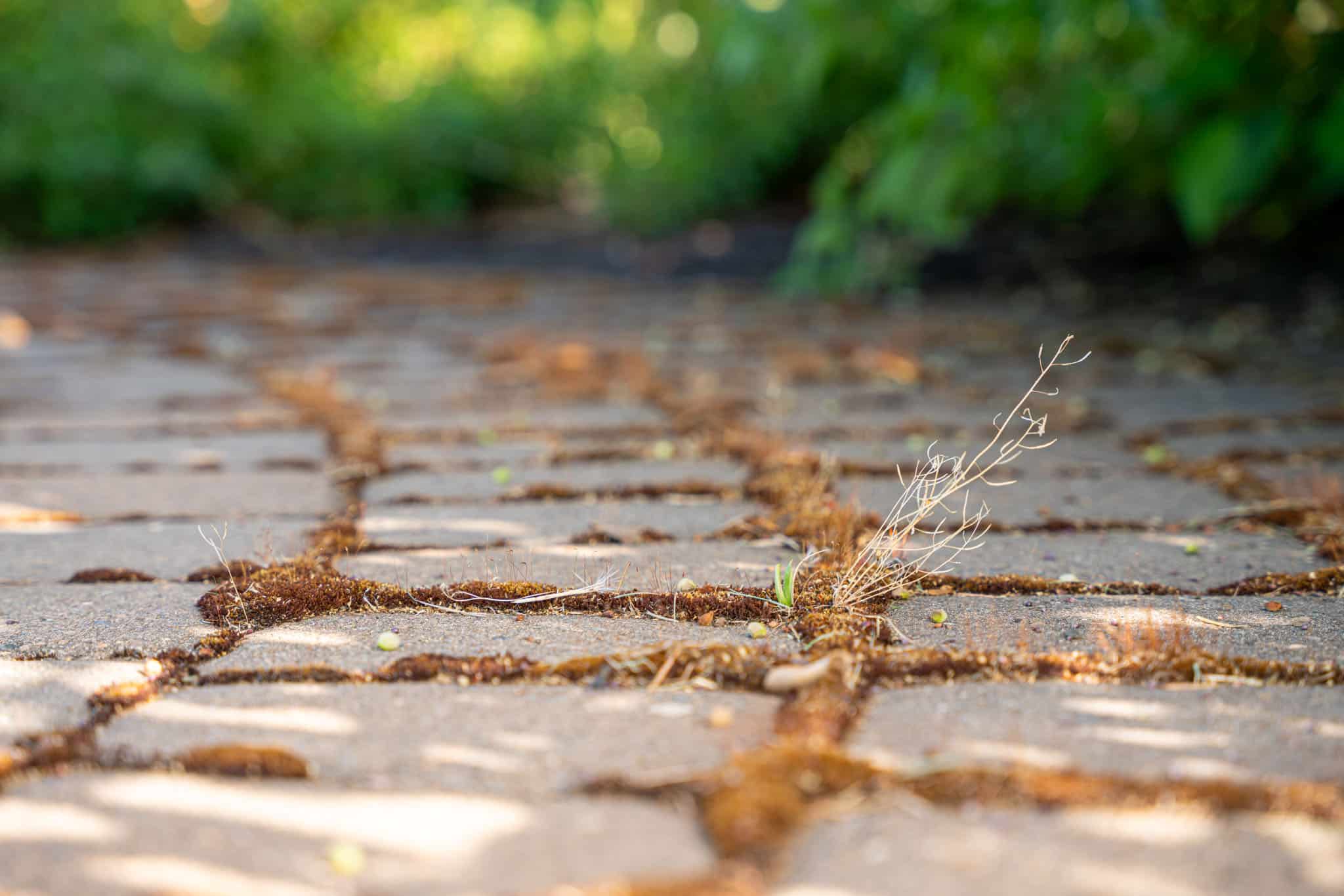
Polymeric sand, on the other hand, is known for controlling weeds and insects. It dries hard, and pests cannot get through without a crack. If polymeric sand joints crack, you must replace them to keep out pests.
How easy is the application?
Regular dry sand is the easiest to install. You dump the sand into the joints and sweep it with a broom.
Polymeric sand is not technically hard to apply to your pavers, but it is possible to damage them. To install, pour the sand in the joints, sweep it in with a broom, activate it with water, and spray away any remaining dust or sand.
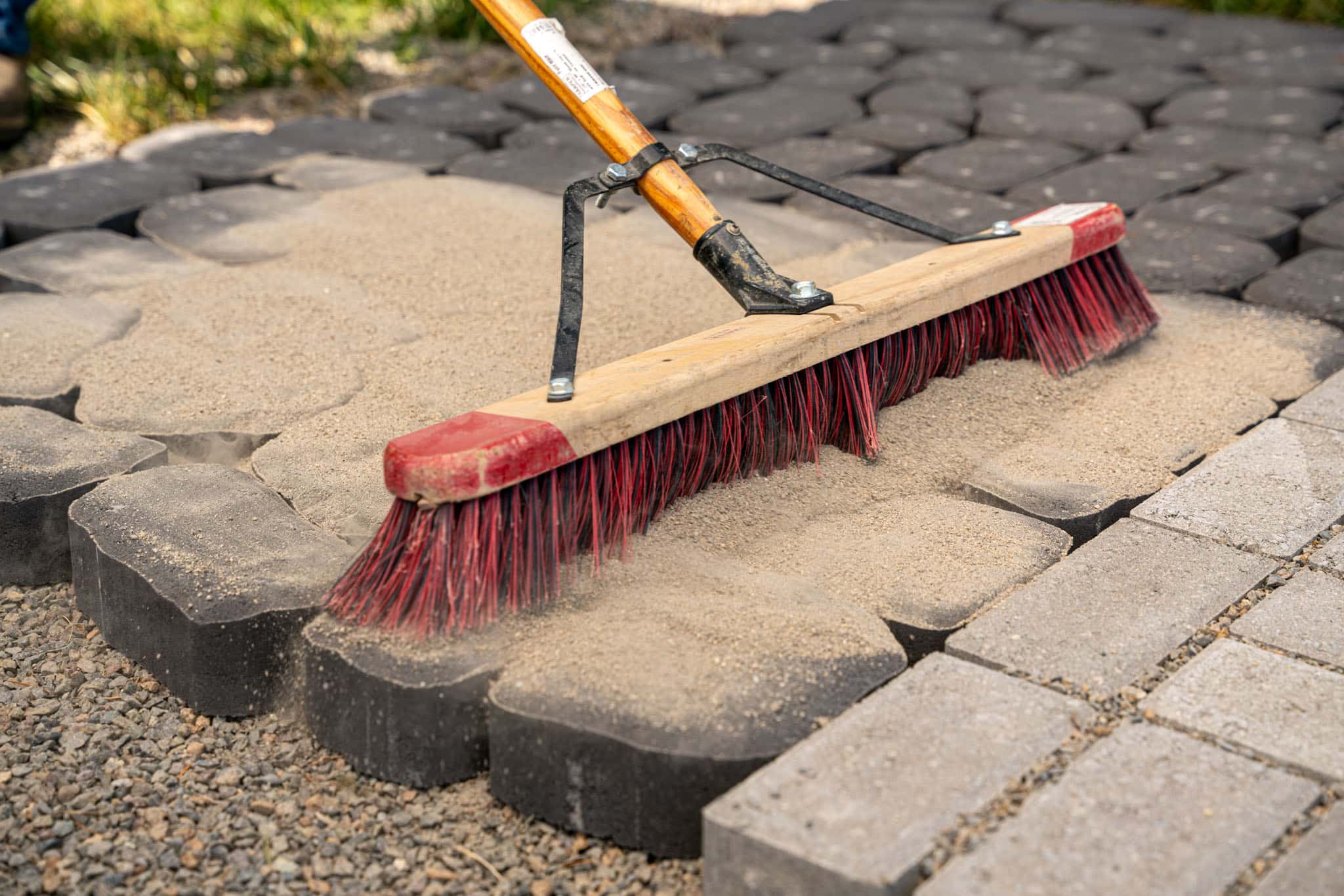
This is the tricky part—if you don’t blow or rinse off your pavers, you can end up with a film of sand all over your pavers. You also must install polymeric sand on a warm and dry day during a week when temperatures do not dip below freezing. This will ensure no sand sneaks out of the joints and onto your beautiful new pavers.
How much do the sands cost?
The easy-to-find, most affordable sand is regular dry sand. You can find it anywhere, costing $5 to $20 per 50-pound bag.
Polymeric sand is also easy to find but will cost you more—anywhere from $20 to $90 per 50-pound bag. However, you should think carefully about the long-term benefits; polymeric sand may cost more initially but add up to much less over the years.
Download our PDF guide
Are you ready to get started installing your dream paver project? Click here to download our free Project Planning Guide to start making your beautiful hardscape plans a reality.
Get our FREE Project Planning Guide
Tell us where to send it and we’ll email the backyard planning guide to you right away!
"*" indicates required fields


